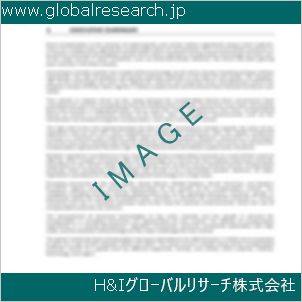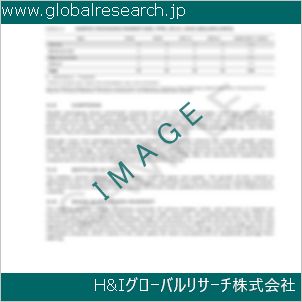1 市場概要
1.1 製品概要と範囲
1.2 市場推定の注意点と基準年
1.3 タイプ別市場分析
1.3.1 概要:グローバルな不可視蛍光材料の消費価値(種類別):2020年対2024年対2031年
1.3.2 有機材料
1.3.3 無機材料
1.4 用途別市場分析
1.4.1 概要:グローバルな不可視蛍光材料の消費額(用途別):2020年対2024年対2031年
1.4.2 インク
1.4.3 コーティング
1.4.4 その他
1.5 グローバル不可視蛍光材料市場規模と予測
1.5.1 グローバル不可視蛍光材料の消費額(2020年、2024年、2031年)
1.5.2 グローバル不可視蛍光材料の販売数量(2020年~2031年)
1.5.3 グローバル不可視蛍光材料の平均価格(2020-2031)
2 メーカープロファイル
2.1 アンストロン・テクノロジーズ
2.1.1 アンストロン・テクノロジーズの詳細
2.1.2 アンストロン・テクノロジーズの主要事業
2.1.3 アンストロン・テクノロジーズの不可視蛍光材料製品およびサービス
2.1.4 アンストロン・テクノロジーズの不可視蛍光材料の売上数量、平均価格、売上高、粗利益率、市場シェア(2020-2025)
2.1.5 アンストロン・テクノロジーズの最近の動向/更新情報
2.2 Shannon Luminous Materials
2.2.1 シャンノン・ルミナス・マテリアルズの詳細
2.2.2 Shannon Luminous Materials 主な事業
2.2.3 Shannon Luminous Materials 不可視蛍光材料の製品とサービス
2.2.4 Shannon Luminous Materials 不可視蛍光材料の売上数量、平均価格、売上高、粗利益率、市場シェア(2020-2025)
2.2.5 シャンノン発光材料の最近の動向/更新
2.3 フリント・グループ
2.3.1 フリント・グループの詳細
2.3.2 フリント・グループ 主な事業
2.3.3 フリント・グループ 不可視蛍光材料の製品とサービス
2.3.4 フリント・グループ 不可視蛍光材料の販売数量、平均価格、売上高、粗利益率、市場シェア(2020-2025)
2.3.5 フリント・グループの最新動向/更新情報
2.4 Sirchie
2.4.1 Sirchieの詳細
2.4.2 Sirchie 主な事業
2.4.3 Sirchie 不可視蛍光材料の製品とサービス
2.4.4 Sirchie 不可視蛍光材料の売上数量、平均価格、売上高、粗利益率、市場シェア(2020-2025)
2.4.5 Sirchieの最近の動向/更新
2.5 Qian Se Bian
2.5.1 Qian Se Bianの詳細
2.5.2 Qian Se Bian 主な事業
2.5.3 Qian Se Bian 不可視蛍光材料の製品とサービス
2.5.4 Qian Se Bian 不可視蛍光材料の売上数量、平均価格、売上高、粗利益率、市場シェア(2020-2025)
2.5.5 Qian Se Bian の最近の動向/更新
3 競争環境:メーカー別不可視蛍光材料
3.1 グローバルな不可視蛍光材料の製造業者別販売数量(2020-2025)
3.2 グローバルな不可視蛍光材料の売上高(メーカー別)(2020-2025)
3.3 グローバルな不可視蛍光材料の平均価格(メーカー別)(2020-2025)
3.4 市場シェア分析(2024年)
3.4.1 メーカー別不可視蛍光材料の出荷量(売上高:$MM)と市場シェア(%):2024
3.4.2 2024年の主要3社による不可視蛍光材料の市場シェア
3.4.3 2024年のトップ6の不可視蛍光材料メーカーの市場シェア
3.5 不可視蛍光材料市場:全体的な企業足跡分析
3.5.1 不可視蛍光材料市場:地域別足跡
3.5.2 不可視蛍光材料市場:企業製品タイプ別足跡
3.5.3 不可視蛍光材料市場:企業製品用途別足跡
3.6 新規参入企業と市場参入障壁
3.7 合併、買収、合意、および協力関係
4 地域別消費分析
4.1 地域別グローバル不可視蛍光材料市場規模
4.1.1 地域別グローバル不可視蛍光材料販売数量(2020-2031)
4.1.2 地域別グローバル不可視蛍光材料消費額(2020-2031)
4.1.3 地域別グローバル不可視蛍光材料平均価格(2020-2031)
4.2 北米の不可視蛍光材料の消費額(2020-2031)
4.3 欧州の不可視蛍光材料の消費額(2020-2031)
4.4 アジア太平洋地域における不可視蛍光材料の消費額(2020-2031)
4.5 南米 不可視蛍光材料の消費額(2020-2031)
4.6 中東・アフリカ 不可視蛍光材料の消費額(2020-2031)
5 市場セグメント別(タイプ)
5.1 グローバルな不可視蛍光材料の売上数量(種類別)(2020-2031)
5.2 グローバル不可視蛍光材料の消費額(種類別)(2020-2031)
5.3 グローバル不可視蛍光材料の平均価格(種類別)(2020-2031)
6 市場セグメント(用途別)
6.1 グローバル不可視蛍光材料の用途別販売数量(2020-2031)
6.2 グローバルな不可視蛍光材料の用途別消費額(2020-2031)
6.3 グローバルな不可視蛍光材料の用途別平均価格(2020-2031)
7 北米
7.1 北米 不可視蛍光材料の売上数量(種類別)(2020-2031)
7.2 北米 不可視蛍光材料の用途別販売量(2020-2031)
7.3 北米 不可視蛍光材料市場規模(国別)
7.3.1 北米 不可視蛍光材料の売上数量(国別)(2020-2031)
7.3.2 北米の不可視蛍光材料の消費額(国別)(2020-2031)
7.3.3 アメリカ市場規模と予測(2020-2031)
7.3.4 カナダ市場規模と予測(2020-2031)
7.3.5 メキシコ市場規模と予測(2020-2031)
8 ヨーロッパ
8.1 欧州 不可視蛍光材料の売上数量(種類別)(2020-2031)
8.2 欧州の不可視蛍光材料の販売数量(用途別)(2020-2031)
8.3 欧州の不可視蛍光材料市場規模(国別)
8.3.1 欧州の不可視蛍光材料の売上数量(国別)(2020-2031)
8.3.2 欧州の不可視蛍光材料の消費額(国別)(2020-2031)
8.3.3 ドイツ市場規模と予測(2020-2031)
8.3.4 フランス市場規模と予測(2020-2031)
8.3.5 イギリス市場規模と予測(2020-2031)
8.3.6 ロシア市場規模と予測(2020-2031)
8.3.7 イタリア市場規模と予測(2020-2031)
9 アジア太平洋
9.1 アジア太平洋地域 不可視蛍光材料の販売数量(種類別)(2020-2031)
9.2 アジア太平洋地域 不可視蛍光材料の売上数量(用途別)(2020-2031)
9.3 アジア太平洋地域における不可視蛍光材料の市場規模(地域別)
9.3.1 アジア太平洋地域における不可視蛍光材料の販売数量(地域別)(2020-2031)
9.3.2 アジア太平洋地域における不可視蛍光材料の地域別消費額(2020-2031)
9.3.3 中国市場規模と予測(2020-2031)
9.3.4 日本市場規模と予測(2020-2031)
9.3.5 韓国市場規模と予測(2020-2031)
9.3.6 インド市場規模と予測(2020-2031)
9.3.7 東南アジア市場規模と予測(2020-2031)
9.3.8 オーストラリア市場規模と予測(2020-2031)
10 南米
10.1 南米 不可視蛍光材料の販売数量(種類別)(2020-2031)
10.2 南米 不可視蛍光材料の販売数量(用途別)(2020-2031)
10.3 南米 不可視蛍光材料市場規模(国別)
10.3.1 南米 不可視蛍光材料の販売数量(国別)(2020-2031)
10.3.2 南米 不可視蛍光材料の消費額(国別)(2020-2031)
10.3.3 ブラジル市場規模と予測(2020-2031)
10.3.4 アルゼンチン市場規模と予測(2020-2031)
11 中東・アフリカ
11.1 中東・アフリカ地域 不可視蛍光材料の売上数量(種類別)(2020-2031)
11.2 中東・アフリカ地域における不可視蛍光材料の用途別販売量(2020-2031年)
11.3 中東・アフリカ地域における不可視蛍光材料の市場規模(国別)
11.3.1 中東・アフリカ地域における不可視蛍光材料の販売数量(国別)(2020-2031)
11.3.2 中東・アフリカ地域における不可視蛍光材料の消費額(国別)(2020-2031)
11.3.3 トルコ市場規模と予測(2020-2031)
11.3.4 エジプト市場規模と予測(2020-2031)
11.3.5 サウジアラビア市場規模と予測(2020-2031)
11.3.6 南アフリカ市場規模と予測(2020-2031)
12 市場動向
12.1 不可視蛍光材料市場の成長要因
12.2 不可視蛍光材料市場の制約要因
12.3 不可視蛍光材料のトレンド分析
12.4 ポーターの5つの力分析
12.4.1 新規参入の脅威
12.4.2 供給者の交渉力
12.4.3 購入者の交渉力
12.4.4 代替品の脅威
12.4.5 競争の激化
13 原材料と産業チェーン
13.1 不可視蛍光材料の原材料と主要メーカー
13.2 不可視蛍光材料の製造コストの割合
13.3 不可視蛍光材料の製造プロセス
13.4 産業バリューチェーン分析
14 流通チャネル別出荷量
14.1 販売チャネル
14.1.1 直接エンドユーザー向け
14.1.2 卸売業者
14.2 不可視蛍光材料の典型的な卸売業者
14.3 不可視蛍光材料の典型的な顧客
15 研究結果と結論
16 付録
16.1 方法論
16.2 研究プロセスとデータソース
16.3 免責事項
1.1 Product Overview and Scope
1.2 Market Estimation Caveats and Base Year
1.3 Market Analysis by Type
1.3.1 Overview: Global Invisible Fluorescent Materials Consumption Value by Type: 2020 Versus 2024 Versus 2031
1.3.2 Organic Materials
1.3.3 Inorganic Materials
1.4 Market Analysis by Application
1.4.1 Overview: Global Invisible Fluorescent Materials Consumption Value by Application: 2020 Versus 2024 Versus 2031
1.4.2 Inks
1.4.3 Coatings
1.4.4 Other
1.5 Global Invisible Fluorescent Materials Market Size & Forecast
1.5.1 Global Invisible Fluorescent Materials Consumption Value (2020 & 2024 & 2031)
1.5.2 Global Invisible Fluorescent Materials Sales Quantity (2020-2031)
1.5.3 Global Invisible Fluorescent Materials Average Price (2020-2031)
2 Manufacturers Profiles
2.1 Angstrom Technologies
2.1.1 Angstrom Technologies Details
2.1.2 Angstrom Technologies Major Business
2.1.3 Angstrom Technologies Invisible Fluorescent Materials Product and Services
2.1.4 Angstrom Technologies Invisible Fluorescent Materials Sales Quantity, Average Price, Revenue, Gross Margin and Market Share (2020-2025)
2.1.5 Angstrom Technologies Recent Developments/Updates
2.2 Shannon Luminous Materials
2.2.1 Shannon Luminous Materials Details
2.2.2 Shannon Luminous Materials Major Business
2.2.3 Shannon Luminous Materials Invisible Fluorescent Materials Product and Services
2.2.4 Shannon Luminous Materials Invisible Fluorescent Materials Sales Quantity, Average Price, Revenue, Gross Margin and Market Share (2020-2025)
2.2.5 Shannon Luminous Materials Recent Developments/Updates
2.3 Flint Group
2.3.1 Flint Group Details
2.3.2 Flint Group Major Business
2.3.3 Flint Group Invisible Fluorescent Materials Product and Services
2.3.4 Flint Group Invisible Fluorescent Materials Sales Quantity, Average Price, Revenue, Gross Margin and Market Share (2020-2025)
2.3.5 Flint Group Recent Developments/Updates
2.4 Sirchie
2.4.1 Sirchie Details
2.4.2 Sirchie Major Business
2.4.3 Sirchie Invisible Fluorescent Materials Product and Services
2.4.4 Sirchie Invisible Fluorescent Materials Sales Quantity, Average Price, Revenue, Gross Margin and Market Share (2020-2025)
2.4.5 Sirchie Recent Developments/Updates
2.5 Qian Se Bian
2.5.1 Qian Se Bian Details
2.5.2 Qian Se Bian Major Business
2.5.3 Qian Se Bian Invisible Fluorescent Materials Product and Services
2.5.4 Qian Se Bian Invisible Fluorescent Materials Sales Quantity, Average Price, Revenue, Gross Margin and Market Share (2020-2025)
2.5.5 Qian Se Bian Recent Developments/Updates
3 Competitive Environment: Invisible Fluorescent Materials by Manufacturer
3.1 Global Invisible Fluorescent Materials Sales Quantity by Manufacturer (2020-2025)
3.2 Global Invisible Fluorescent Materials Revenue by Manufacturer (2020-2025)
3.3 Global Invisible Fluorescent Materials Average Price by Manufacturer (2020-2025)
3.4 Market Share Analysis (2024)
3.4.1 Producer Shipments of Invisible Fluorescent Materials by Manufacturer Revenue ($MM) and Market Share (%): 2024
3.4.2 Top 3 Invisible Fluorescent Materials Manufacturer Market Share in 2024
3.4.3 Top 6 Invisible Fluorescent Materials Manufacturer Market Share in 2024
3.5 Invisible Fluorescent Materials Market: Overall Company Footprint Analysis
3.5.1 Invisible Fluorescent Materials Market: Region Footprint
3.5.2 Invisible Fluorescent Materials Market: Company Product Type Footprint
3.5.3 Invisible Fluorescent Materials Market: Company Product Application Footprint
3.6 New Market Entrants and Barriers to Market Entry
3.7 Mergers, Acquisition, Agreements, and Collaborations
4 Consumption Analysis by Region
4.1 Global Invisible Fluorescent Materials Market Size by Region
4.1.1 Global Invisible Fluorescent Materials Sales Quantity by Region (2020-2031)
4.1.2 Global Invisible Fluorescent Materials Consumption Value by Region (2020-2031)
4.1.3 Global Invisible Fluorescent Materials Average Price by Region (2020-2031)
4.2 North America Invisible Fluorescent Materials Consumption Value (2020-2031)
4.3 Europe Invisible Fluorescent Materials Consumption Value (2020-2031)
4.4 Asia-Pacific Invisible Fluorescent Materials Consumption Value (2020-2031)
4.5 South America Invisible Fluorescent Materials Consumption Value (2020-2031)
4.6 Middle East & Africa Invisible Fluorescent Materials Consumption Value (2020-2031)
5 Market Segment by Type
5.1 Global Invisible Fluorescent Materials Sales Quantity by Type (2020-2031)
5.2 Global Invisible Fluorescent Materials Consumption Value by Type (2020-2031)
5.3 Global Invisible Fluorescent Materials Average Price by Type (2020-2031)
6 Market Segment by Application
6.1 Global Invisible Fluorescent Materials Sales Quantity by Application (2020-2031)
6.2 Global Invisible Fluorescent Materials Consumption Value by Application (2020-2031)
6.3 Global Invisible Fluorescent Materials Average Price by Application (2020-2031)
7 North America
7.1 North America Invisible Fluorescent Materials Sales Quantity by Type (2020-2031)
7.2 North America Invisible Fluorescent Materials Sales Quantity by Application (2020-2031)
7.3 North America Invisible Fluorescent Materials Market Size by Country
7.3.1 North America Invisible Fluorescent Materials Sales Quantity by Country (2020-2031)
7.3.2 North America Invisible Fluorescent Materials Consumption Value by Country (2020-2031)
7.3.3 United States Market Size and Forecast (2020-2031)
7.3.4 Canada Market Size and Forecast (2020-2031)
7.3.5 Mexico Market Size and Forecast (2020-2031)
8 Europe
8.1 Europe Invisible Fluorescent Materials Sales Quantity by Type (2020-2031)
8.2 Europe Invisible Fluorescent Materials Sales Quantity by Application (2020-2031)
8.3 Europe Invisible Fluorescent Materials Market Size by Country
8.3.1 Europe Invisible Fluorescent Materials Sales Quantity by Country (2020-2031)
8.3.2 Europe Invisible Fluorescent Materials Consumption Value by Country (2020-2031)
8.3.3 Germany Market Size and Forecast (2020-2031)
8.3.4 France Market Size and Forecast (2020-2031)
8.3.5 United Kingdom Market Size and Forecast (2020-2031)
8.3.6 Russia Market Size and Forecast (2020-2031)
8.3.7 Italy Market Size and Forecast (2020-2031)
9 Asia-Pacific
9.1 Asia-Pacific Invisible Fluorescent Materials Sales Quantity by Type (2020-2031)
9.2 Asia-Pacific Invisible Fluorescent Materials Sales Quantity by Application (2020-2031)
9.3 Asia-Pacific Invisible Fluorescent Materials Market Size by Region
9.3.1 Asia-Pacific Invisible Fluorescent Materials Sales Quantity by Region (2020-2031)
9.3.2 Asia-Pacific Invisible Fluorescent Materials Consumption Value by Region (2020-2031)
9.3.3 China Market Size and Forecast (2020-2031)
9.3.4 Japan Market Size and Forecast (2020-2031)
9.3.5 South Korea Market Size and Forecast (2020-2031)
9.3.6 India Market Size and Forecast (2020-2031)
9.3.7 Southeast Asia Market Size and Forecast (2020-2031)
9.3.8 Australia Market Size and Forecast (2020-2031)
10 South America
10.1 South America Invisible Fluorescent Materials Sales Quantity by Type (2020-2031)
10.2 South America Invisible Fluorescent Materials Sales Quantity by Application (2020-2031)
10.3 South America Invisible Fluorescent Materials Market Size by Country
10.3.1 South America Invisible Fluorescent Materials Sales Quantity by Country (2020-2031)
10.3.2 South America Invisible Fluorescent Materials Consumption Value by Country (2020-2031)
10.3.3 Brazil Market Size and Forecast (2020-2031)
10.3.4 Argentina Market Size and Forecast (2020-2031)
11 Middle East & Africa
11.1 Middle East & Africa Invisible Fluorescent Materials Sales Quantity by Type (2020-2031)
11.2 Middle East & Africa Invisible Fluorescent Materials Sales Quantity by Application (2020-2031)
11.3 Middle East & Africa Invisible Fluorescent Materials Market Size by Country
11.3.1 Middle East & Africa Invisible Fluorescent Materials Sales Quantity by Country (2020-2031)
11.3.2 Middle East & Africa Invisible Fluorescent Materials Consumption Value by Country (2020-2031)
11.3.3 Turkey Market Size and Forecast (2020-2031)
11.3.4 Egypt Market Size and Forecast (2020-2031)
11.3.5 Saudi Arabia Market Size and Forecast (2020-2031)
11.3.6 South Africa Market Size and Forecast (2020-2031)
12 Market Dynamics
12.1 Invisible Fluorescent Materials Market Drivers
12.2 Invisible Fluorescent Materials Market Restraints
12.3 Invisible Fluorescent Materials Trends Analysis
12.4 Porters Five Forces Analysis
12.4.1 Threat of New Entrants
12.4.2 Bargaining Power of Suppliers
12.4.3 Bargaining Power of Buyers
12.4.4 Threat of Substitutes
12.4.5 Competitive Rivalry
13 Raw Material and Industry Chain
13.1 Raw Material of Invisible Fluorescent Materials and Key Manufacturers
13.2 Manufacturing Costs Percentage of Invisible Fluorescent Materials
13.3 Invisible Fluorescent Materials Production Process
13.4 Industry Value Chain Analysis
14 Shipments by Distribution Channel
14.1 Sales Channel
14.1.1 Direct to End-User
14.1.2 Distributors
14.2 Invisible Fluorescent Materials Typical Distributors
14.3 Invisible Fluorescent Materials Typical Customers
15 Research Findings and Conclusion
16 Appendix
16.1 Methodology
16.2 Research Process and Data Source
16.3 Disclaimer
| ※参考情報 不可視蛍光材料、または「インビジブル蛍光材料」とは、通常の可視光の範囲では確認できないが、特定の波長の光を照射した際に荧光を発する材料のことを指します。この技術は様々な分野で利用されており、その特異な性質は多くの応用を可能にしています。 不可視蛍光材料の定義に関して、これらの材料は主に紫外線や近赤外線などの非可視光源からのエネルギーを吸収し、それを再放出する際に可視光を発します。この現象は「蛍光」と呼ばれ、材料によって異なる波長の光を放出して、目に見えない情報を可視化することができます。 不可視蛍光材料の特徴には、いくつかの重要なポイントがあります。まず、不可視蛍光材料は、その名の通り普段は目に見えませんが、特定の条件下では光を発するため、セキュリティや識別の用途に適しています。また、これらの材料は高い耐久性を持ち、化学的安定性があるものが多いです。さらに、温度や湿度、化学環境に依存せずに性質を維持することができるため、過酷な環境下でも利用されることが可能です。 種類については、不可視蛍光材料は大きく分けて有機蛍光体と無機蛍光体の二つに分類されます。有機蛍光体は、主に有機分子から構成されており、ターゲットとする波長に応じた設計が行いやすいという特徴があります。一方、無機蛍光体は主に鉱物や金属酸化物などから作られ、高い熱安定性や耐久性を有することが多いです。特定の用途では、両者を組み合わせた複合材料も存在します。 用途は多岐にわたります。まず、セキュリティ業界では、不正防止のためのインクやラベルに利用されています。銀行券や重要な書類に不可視蛍光インクを使用して偽造を防ぐ手段として非常に効果的です。また、トレーサビリティの面でも利用されており、製品に不可視マークをつけることで、供給チェーンの管理を容易にしています。 学術研究においても、不可視蛍光材料は重要な役割を果たします。生物学的な研究や環境モニタリングにおいて、特定の分子を検出するための指標として利用され、ターゲットとなる物質をより効率的に識別できます。蛍光顕微鏡技術と合わせることで、細胞や組織の動態を観察する際に、その効果を発揮します。 関連技術においては、蛍光イメージング技術が挙げられます。この技術を用いることで、不可視蛍光材料を利用した観察や測定が可能になります。また、ナノテクノロジーの進歩によって、ナノサイズの蛍光体を合成することも可能になり、より高精度な測定や新たな応用の開発が進められています。蛍光材料の性能向上には、量子ドット技術やポリマー技術も関連しています。 さらに、不可視蛍光材料は環境にやさしい製品設計にも寄与しています。植物由来の有機材料を用いた製品開発や、再生可能なリソースを利用することで、持続可能な社会の実現に向けた取り組みも行われています。これにより、環境への負荷を軽減しながら、必要な機能性を保持することが可能になります。 最後に、今後の発展についてですが、不可視蛍光材料は次世代のイノベーションを引き起こす可能性を秘めています。人工知能やビッグデータと組み合わせることで、より高度な監視システムや新しい製品開発が進むでしょう。また、バイオセンサーやナノ医療の分野でも大きな可能性を持っています。これらの材料は、医療診断や治療においても利用が期待されており、患者の健康管理における新たなツールとしての役割を果たすでしょう。 以上のように、不可視蛍光材料はその特異な性質を活用し、多くの分野で広がりを見せています。これからもその可能性はますます拡大し、私たちの生活に貢献し続けることでしょう。 |
❖ 免責事項 ❖
http://www.globalresearch.jp/disclaimer












